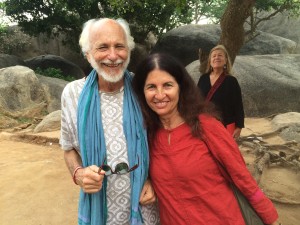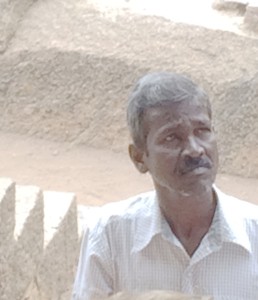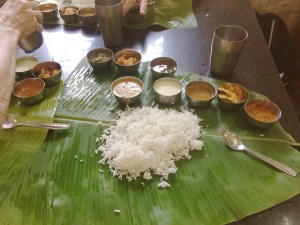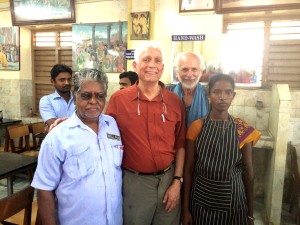A language is a dialect backed up by an army.–Martin Noval
 We finally met up with our tour group, led by Carol and Martn Noval, we’re ready to launch our expedition through the Indian south. Stunningly enough, our group of twelve consists of eight people from the east bay. Not only from the east bay, but seven of those are from our own Rockridge neighborhood. One from Berkeley. The other four are from Boston, Chile, and Puerto Rico (via Mexico.)
We finally met up with our tour group, led by Carol and Martn Noval, we’re ready to launch our expedition through the Indian south. Stunningly enough, our group of twelve consists of eight people from the east bay. Not only from the east bay, but seven of those are from our own Rockridge neighborhood. One from Berkeley. The other four are from Boston, Chile, and Puerto Rico (via Mexico.)
It’s different down here than it was in Delhi. You can tell it already. First hint was disembarking from the plane in Chennai. Warm and humid. Lush vegetation. In Delhi when you walk into a hotel lobby, you get a greeting which consists of hands held in prayer position at chest level and a slight bow and the word “namaste” uttered with a smile. “Namaste” means “I bow to you.” Nice custom, plus I now know a bit about what all those “Namaste Yoga” studios around town are about.
Entering our hotel in the south, we got pretty much the same slight bow, but with a right hand placed on the heart. No words, but the gesture speaks for itself, and it’s a perfect testament to the warmth and openness we find everywhere in this country. You can train your staff to wait tables and keep the place clean and place hand over heart or make prayerful gestures, but you can’t manufacture that radiant, caring attitude.
What else is different about the south? Well it all started around 2500 B.C. when those big ancient cities like Ur and Mesopotamia were getting started. Tribal groups of Aryan people were being forced out of northern Persia (Iran) and pushed south. Reasons unknown. As they migrated, some turned right (west) toward Europe. Others turned left toward India. Thus, the natives of Northern India have a good share of those Aryan genes.
The south was populated by a smaller, darker group called the Tamul. Where did they come from? Guinea? Africa? Anyone’s guess apparently. And they speak a language completely unrelated to any other in the world. The Aryans’ Sanskrit is an Indo-European tongue closely related (at least to a linguist) to all those tongues familiar to us westerners.
 Thus, we’re here with folks who tend to look more like this guy than that lady. Not a total truth, of course. Plenty of mixing and matching has gone on over the years.
Thus, we’re here with folks who tend to look more like this guy than that lady. Not a total truth, of course. Plenty of mixing and matching has gone on over the years.
Martin is a gifted lecturer and teacher, so we’re getting heavy doses of history, art, and philosophy packaged in a most entertaining manner. More about him and the rest later. For right now, it’s enough to be where the food and weather are both plenty hot. Where your lunch might be rice and mysterious sauces served up on a banana leaf.  You’re supposed to eat the sauces in a particular order, but none of us were able to solve the sequence so we just washed our hands, poured a bit of tastiness on the rice, and scooped it up with our fingers. Yum.
You’re supposed to eat the sauces in a particular order, but none of us were able to solve the sequence so we just washed our hands, poured a bit of tastiness on the rice, and scooped it up with our fingers. Yum.
